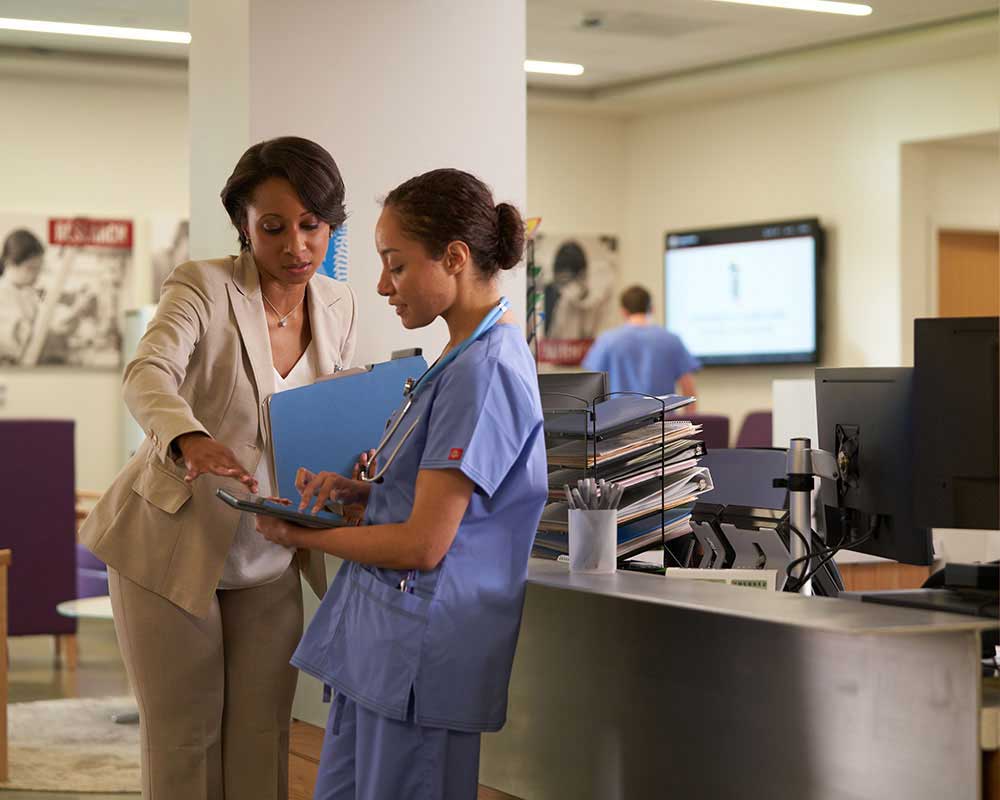Ideal Practices in Medical Management for Improving Performance and Minimizing Expenses
In the ever-evolving landscape of health care, the pursuit of ideal techniques in clinical administration is paramount for boosting performance and curbing expenses. By incorporating sophisticated technologies such as digital health and wellness records and telemedicine, medical care providers can streamline procedures and enhance patient treatment. Nevertheless, technology alone is not a cure all; optimizing source allotment and cultivating collective interaction among treatment teams are just as vital (medical administration). As organizations strive to stabilize top quality and price, what techniques should be prioritized to achieve these double objectives? The solution to these questions hold the trick to an extra sustainable healthcare system.
Leveraging Advanced Innovation
In today's swiftly evolving health care landscape, leveraging sophisticated modern technology is no more optional but vital for reliable medical administration. The combination of electronic options right into medical care systems has actually transformed the way facilities operate, enhancing procedures and boosting patient treatment. Electronic Health Records (EHRs) are pivotal, providing extensive client data that can be accessed quickly by accredited workers, hence reducing redundancy and minimizing errors. By streamlining client info, EHRs eliminate the need for cumbersome paperwork and facilitate seamless communication among doctor.
Telemedicine is one more technological advancement that has actually reinvented client communication. It offers ease for both individuals and healthcare professionals by making it possible for remote assessments, which can reduce the requirement for in-person visits and optimize consultation scheduling. Additionally, telehealth systems can extend medical care access to country or underserved areas, linking gaps in treatment delivery.
In addition, using Artificial Knowledge (AI) and equipment knowing is coming to be increasingly widespread in predictive analytics, enabling early discovery of potential health and wellness issues and more informed decision-making. These innovations, when incorporated efficiently, can enhance diagnostic accuracy and individualize individual therapy strategies, inevitably leading to improved medical care end results and operational effectiveness.
Optimizing Source Appropriation
Effective resource allowance is essential for making the most of the effectiveness of clinical management. By purposefully taking care of resources such as personnel, devices, and financial resources, health care centers can dramatically enhance their operational performance, improve client results, and decrease unnecessary expenditures. The very first step in optimizing resource allotment includes carrying out an extensive evaluation of present possessions and identifying areas where resources may be underutilized or exhausted. This analysis needs to be data-driven, making use of metrics and analytics to educate decision-making procedures.
Focusing on source allotment based on patient requirements and solution needs is important. Implementing versatile staffing versions can likewise enhance labor sources by adjusting personnel allocation in response to fluctuating individual quantities.
Financial resources need to be meticulously checked and assigned with calculated insight to sustain both short-term operational requirements and lasting institutional goals. This includes investing in training programs that improve personnel expertises and taking on energy-efficient practices that reduce functional prices (medical administration). Ultimately, an enhanced resource allowance approach cultivates a lasting medical care setting that is receptive, effective, and economically prudent
Streamlining Workflow Processes
When healthcare facilities objective to improve operational efficiency, improving process processes ends up being an essential focus. Effective workflows minimize redundancy, eliminate unnecessary steps, and enhance coordination amongst medical care specialists. This technique not only speeds up service delivery but additionally boosts the high quality of client care.

Next, modern technology assimilation plays a considerable role in simplifying workflows. Applying digital health and wellness records (EHRs) and digital medical professional order access (CPOE) systems reduces documents, decreases human error, and guarantees details comes to all pertinent why not try here personnel. Furthermore, leveraging telemedicine systems can simplify client appointments and follow-ups, reducing the stress on physical framework.

Ultimately, streamlined workflows result in cost reductions and improved client fulfillment, promoting a much more sustainable health care atmosphere.
Enhancing Data Management
Building upon structured operations, maximizing information administration ends up being an important element in advancing healthcare management. Reliable information administration systems are important for preserving accurate client records, boosting decision-making, and making certain conformity with regulative standards. By applying durable data management remedies, medical care facilities can enhance the high quality of patient treatment while all at once minimizing operational prices.
One secret aspect of improving data monitoring is the assimilation of advanced digital health and wellness document (EHR) systems. These systems assist in the seamless exchange of person information throughout different divisions, minimizing replication of examinations and lessening errors. A properly designed EHR system supports information analytics, allowing health care service providers to recognize trends and make educated decisions pertaining to client treatment.
Furthermore, guarding client data is paramount. Embracing comprehensive cybersecurity procedures, consisting of encryption and normal audits, makes sure the stability and discretion of delicate information. This not only protects individuals yet likewise maintains the establishment's credibility.
Purchasing personnel training is another important factor. Informing medical care professionals on data management methods enhances their capability to properly make use of modern technology, resulting in boosted person outcomes. In conclusion, improving information management with innovative modern technology and thorough training is important for accomplishing effectiveness and price decrease in clinical management.
Fostering Collaborative Interaction
A critical component ahead of time medical administration is fostering collaborative Related Site communication among healthcare professionals. Effective interaction is paramount for ensuring seamless person treatment, maximizing therapy end helpful resources results, and lessening mistakes. By motivating open dialogue and coordination throughout multidisciplinary groups, medical care companies can improve their operational efficiency and reduce unneeded expenses.
Central to this method is the combination of communication technologies such as electronic health documents (EHRs) and protected messaging platforms, which promote the quick exchange of vital client information. These devices allow healthcare service providers to access and share information in genuine time, ensuring that all group members are informed and straightened in their decision-making processes. Moreover, normal team conferences and interdisciplinary rounds can additionally advertise a society of collaboration and liability.
Training programs focused on boosting communication abilities are additionally necessary. Ultimately, promoting collaborative communication leads to enhanced medical care delivery and expense financial savings.

Verdict
Incorporating innovative technology, such as digital health records and telemedicine, along with enhanced source allocation and streamlined process procedures, is essential for boosting effectiveness in clinical administration. Effective data administration and cultivating joint interaction among healthcare teams are essential for lessening redundancies and enhancing care high quality. By focusing on precautionary care and taking part in top quality renovation campaigns, medical care companies can accomplish considerable expense savings and improved patient end results, therefore making sure lasting medical care distribution in a progressively complex environment.
Comments on “Why Medical Administration is Necessary for Smooth Health Care Operations”